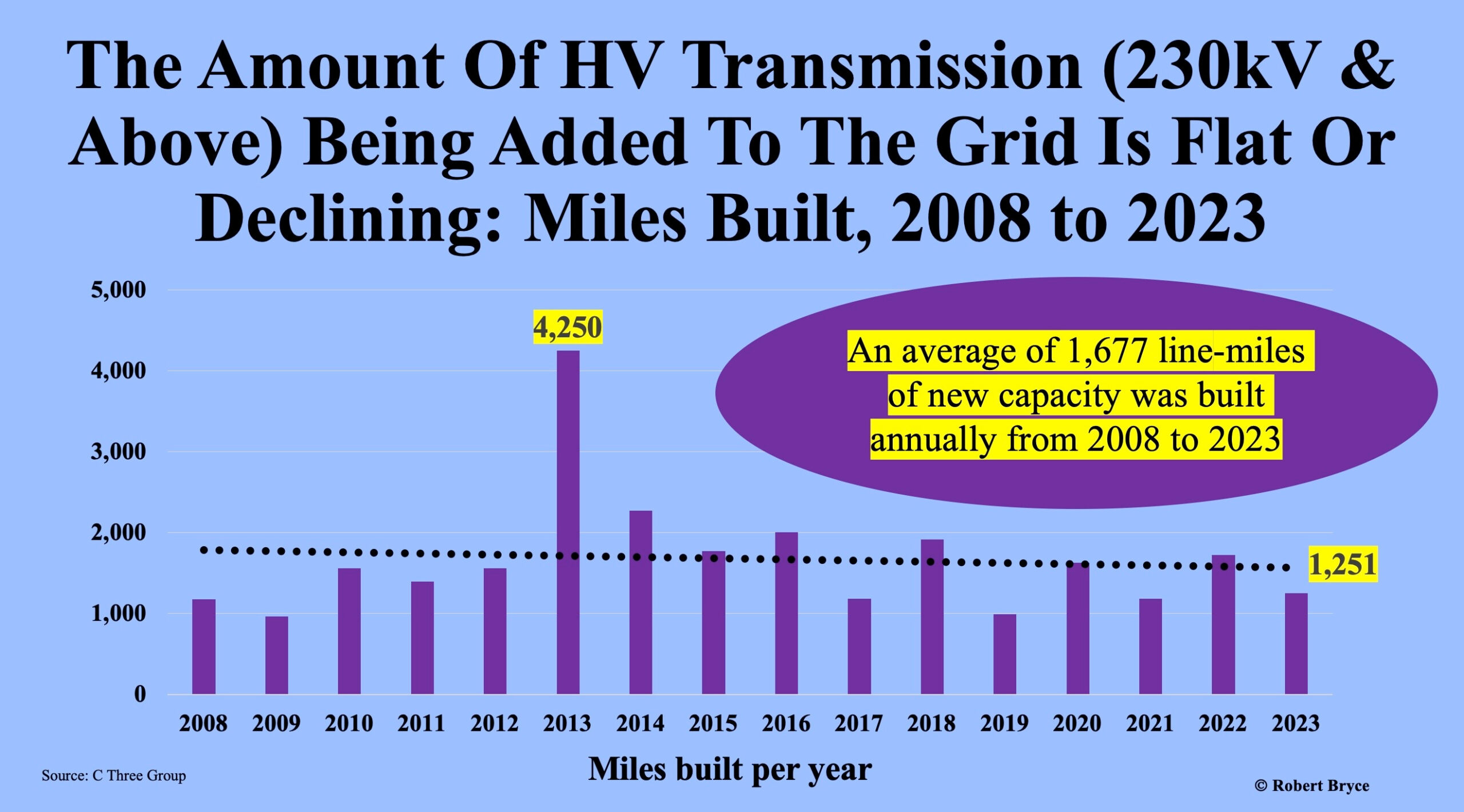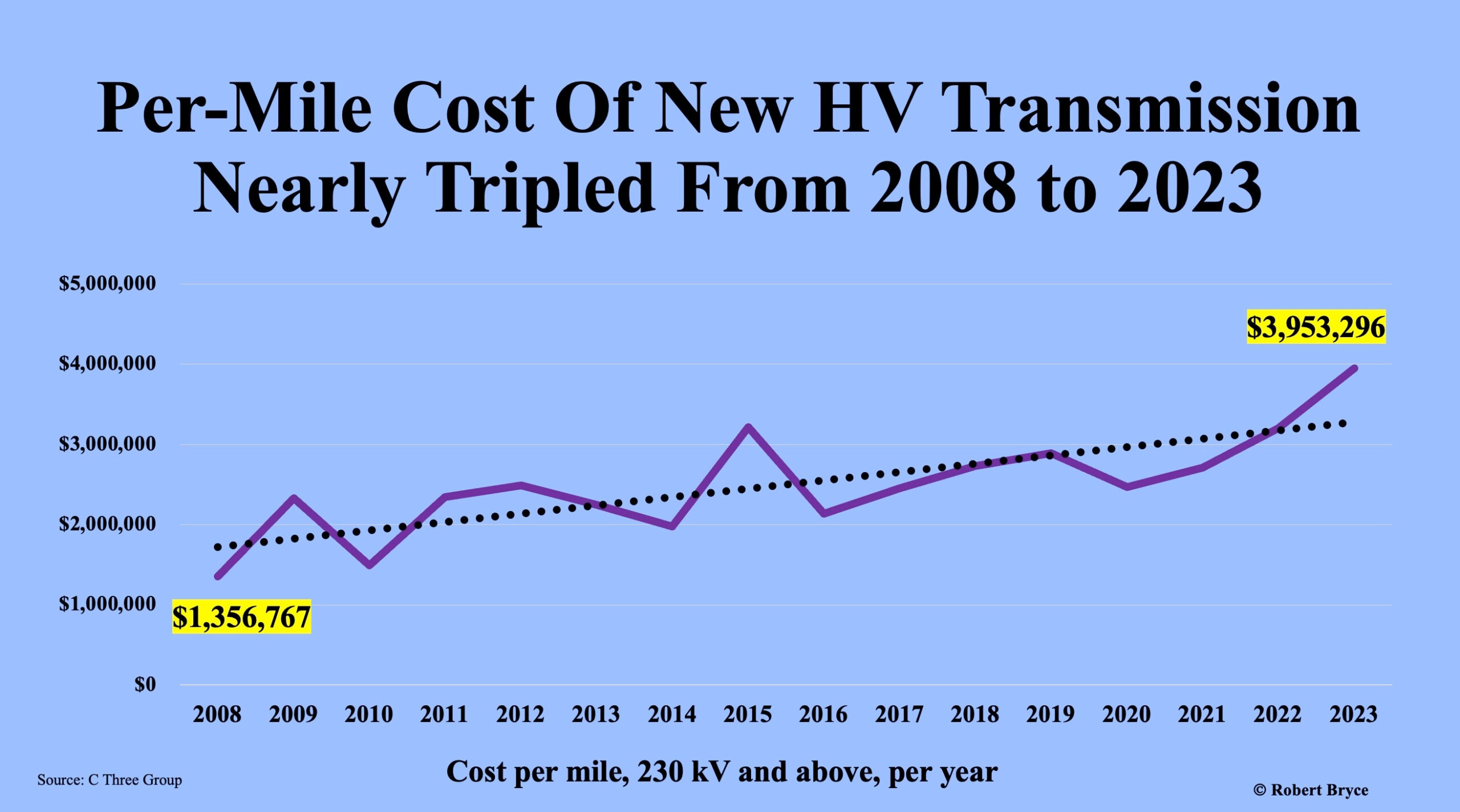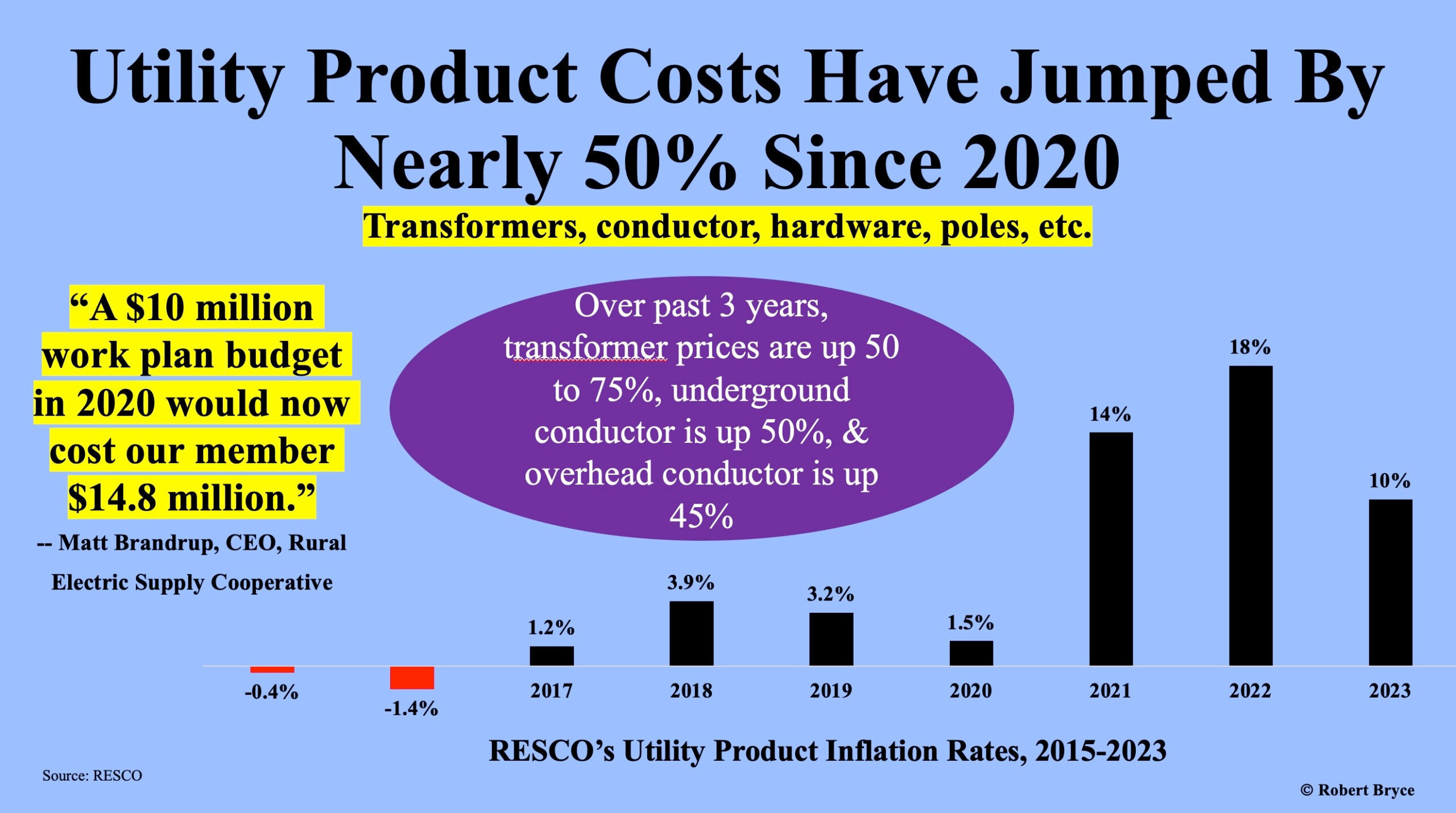Key Takeaways
Massachusetts utilities are asking the state for permission to add $2.4 billion to consumers’ bills to accommodate intermittent wind and solar energy and massive increases in electrification.
Converting the U.S. grid to intermittent power sources will cost enormous sums, requiring tens of thousands of miles of new lines to send energy from rural areas to the cities.
Costs are skyrocketing for grid improvements, and local opposition is increasing.
The grid has been called the “most complex machine in the world,” and its complexity will increase because of more non-dispatchable energy capacity being mandated and increased demand from electric vehicles and heat pumps.
Americans should expect increases in their utility bills as utilities comply with energy edicts issued from federal and state governments.
Eversource and National Grid, the major utilities in Massachusetts, are requesting rate hikes to enhance the power grid and accommodate the growing demand from electric vehicles and heat pumps. They are requesting approximately $2.4 billion over the next five years for grid improvements to convert the grid for renewable energy production and make it more resilient and capable of handling the surge in electrification. That is because Biden’s and the state’s climate agenda will result in Massachusetts homes consuming nearly three times as much electricity by 2050 than they do today. To deliver all that power, Eversource and National Grid will have to invest billions in grid infrastructure upgrades with ratepayers picking up much of the cost. The two utilities have asked the state Department of Public Utilities to begin the process of recouping their investments in converting the electric grid by raising rates over a five-year period.
Eversource is looking for state approval to pass on nearly $400 million of its costs over the next five years, while National Grid is seeking reimbursement for about $2 billion. Both utilities plan to recover money for other grid fixes through their regular rate filings. If these “electric sector modernization” plans get approved, five years from now, the average Eversource residential customer will pay nearly $5 a month more than today, while National Grid residential customers will pay an additional charge of nearly $7 a month, and neither amount includes the cost of the increased power that the home may be consuming by then. Current electric bills for both utilities average just over $200 a month.
Massachusetts’ 2022 climate law requires consumers to convert to electric vehicles and heat pumps, away from gasoline-fueled vehicles and natural gas and heating oil so the state can reach net-zero carbon emissions by 2050. While about half of the region’s electricity comes from natural gas plants, more renewable energy projects, including offshore wind farms, are expected to come online in concert with President Biden’s goal of 100 percent “clean” electricity by 2035 and transition to a zero-emissions economy by 2050.
New England’s current grid is set up to handle large amounts of power coming from a few power plants. Moving to a more decentralized model with solar panels on rooftops and in fields across the state will require infrastructure investments to accommodate the changes in electricity flows, which is why the utilities are asking for rate increases. These are part of the unmentioned costs of shifting to an intermittent, weather-dependent system. A significant increase in electric heat and car charging will also require changes to the grid infrastructure. If approved, ratepayers would pay for the utilities’ grid “modernization” plans that include a range of upgrades, from wire and substation upgrades to new smart meters and batteries for homes, to software that tracks and responds to power usage in real time.
U.S. Grid Conversion
For the “energy transition” to move from one mostly composed of fossil fuels to one composed mostly of renewable energy sources, huge expansions of America’s high-voltage transmission grid, totaling tens of thousands of miles, must be completed in the next decade or two. At that point, the new grid is expected to deliver electricity from vast areas of rural America that will be covered with tons of solar panels and wind turbines to consumers living in distant cities. This is to happen by mid-century, according to the climate agenda of the Biden administration.
One problem with making this a reality is that the United States is not building anything close to the amount of high-voltage transmission capacity that is needed. The amount of new high-voltage transmission (230kV and above) built annually in the United States is actually flat or declining. In 2023, the United States added 1,251 miles of new high-voltage capacity. That is significantly below the 1,677 miles of new high-voltage capacity that was added annually to the grid between 2008 and 2023.

Further, the cost of building new transmission capacity is soaring. Each mile of new high-voltage capacity added to the grid in 2023 cost about $3.95 million, which is nearly triple the per-mile cost in 2008. The surge in costs is largely attributable to the soaring cost of acquiring rights of way and dealing with permits and regulatory compliance. Building any high-power infrastructure is challenging, can take up to 3 to 5 years for installing a 345kV substation, and requires experienced linemen, engineers, and a great deal of heavy equipment. The grid is enormously complex and requires hundreds of suppliers and complicated engineering. Smithsonian Magazine describes it as the most complex system ever built.

In addition to the cost and difficulty of acquiring rights of way, electric utilities across the country are seeing large cost increases in the products they need to maintain and upgrade the grid. Transformers (single-phase transformers that feed the homes and small business and the larger three-phase transformers that feed the larger businesses and industrial type of loads) have increased in price by 50 to 75 percent depending upon the manufacturer. The cost of the primary underground conductor, the wire used in main underground circuits, increased by 50 percent, and the cost of the overhead conductor (the wire used to feed pole-mounted transformers) increased by 45 percent.

In addition to the construction and cost issues, transmission projects are being hindered by local opposition. Robert Bryce has numerous examples in his article entitled, Out Of Transmission Revisited.
Conclusion
Massachusetts’ two main utilities are asking for $2.4 billion to be paid for by ratepayers for grid “modernization,” which will be a drop in the bucket of what is needed to convert the U.S. grid to move electricity from rural areas with mountains of solar and wind facilities to urban demand centers. For Biden’s climate agenda to become reality, tens of thousands of miles of grid capacity are needed—far more than is currently being constructed. The high-voltage grid is expanding very slowly, the costs associated with it are soaring, and the opposition to vast expansion is facing fierce resistance from local communities.



